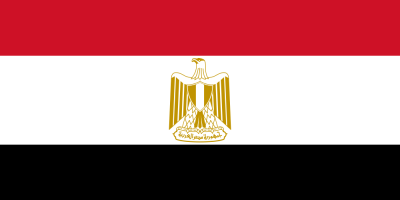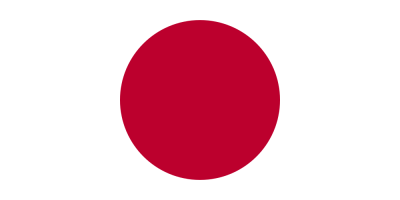Philippines flag color codes contains symbolic colors that represent the history and aspirations of the Filipino people. This article provides the Philippines flag color codes in various formats including HTML HEX, RGB, PANTONE, HSL, CMYK, HWB and NCOL. Understanding the meanings behind the Philippines flag colors and having the color codes readily available allows designers and developers to easily integrate the national colors into websites, graphics and other media. Whether you are looking for the hex code for the Philippines flag blue or the RGB values for Philippines flag red, this article provides the Philippines flag color codes you need.
Table of Contents
What are the colors of Philippines flag?
Here is an explanation of the colors of the Philippine national flag:
Blue – The blue stripe at the top of the flag represents peace, truth, and justice. Blue is the color of the skies and ocean surrounding the Philippines, emphasizing the archipelagic nature of the country. It reminds the Filipino people to be peaceful and idealistic as one nation.
Red – The red stripe at the bottom of the flag symbolizes patriotism, valor, and the blood spilled by heroes who fought for the nation’s independence. Red conveys the courage and strength of the Filipino people.
White – The white triangle stands for equality, hope, and unity. White represents the purity of Filipino national ideals. It also honors the exceptional contributions of the revolutionary light of the Katipunan during the Philippine Revolution.
Yellow Sun – The eight-rayed golden sun at the center of the white triangle is a symbol of unity, freedom, people’s democracy, and sovereignty. The sun’s rays were intended to stand for the provinces of the Philippines during the time of the flag’s design.
In summary, the colors and symbols of the Philippine flag underscore national values like democracy, hope, heroism, and independence. The flag reflects the shared struggles and aspirations of the Filipino people for a just, peaceful, and egalitarian society.
Philippines flag color codes & Color Names:
BLUE
| Color Model | Value |
|---|---|
| HTML | #0033A0 |
| HEX | 0033A0 |
| RGB | 0, 51, 160 |
| PANTONE | Reflex Blue |
| HSL | 214°, 100%, 31% |
| CMYK | 100%, 68%, 0%, 37% |
| HWB | 214°, 0%, 37% |
| NCOL | #001F61 |
RED
| Color Model | Value |
|---|---|
| HTML | #CE1126 |
| HEX | CE1126 |
| RGB | 206, 17, 38 |
| PANTONE | 186 C |
| HSL | 357°, 84%, 44% |
| CMYK | 0%, 92%, 82%, 19% |
| HWB | 357°, 19%, 19% |
| NCOL | #B5071A |
WHITE
| Color Model | Value |
|---|---|
| HTML | #FFFFFF |
| HEX | FFFFFF |
| RGB | 255, 255, 255 |
| PANTONE | N/A |
| HSL | 0°, 0%, 100% |
| CMYK | 0%, 0%, 0%, 0% |
| HWB | 0°, 100%, 0% |
| NCOL | #FFFFFF |
YELLOW
| Color Model | Value |
|---|---|
| HTML | #FFD100 |
| HEX | FFD100 |
| RGB | 255, 209, 0 |
| PANTONE | Yellow C |
| HSL | 46°, 100%, 50% |
| CMYK | 0%, 18%, 100%, 0% |
| HWB | 46°, 0%, 0% |
| NCOL | #E1B300 |
What is the meaning of colors in the Philippines flag?
The colors of the Philippine flag represent the following:
Blue – Stands for peace, truth, and justice. It also signifies the country’s sovereignty and its archipelagic nature as an island nation surrounded by seas and oceans.
Red – Symbolizes patriotism, valor, and the blood and sacrifice of national heroes who fought for independence. Red represents the courage and bravery of the Filipino people.
White – Signifies equality, hope, and unity of the Filipino people. It honors the Katipunan revolutionary movement that sought independence from Spain. White represents the purity of national ideals.
Yellow Sun – The golden yellow sun with eight rays represents unity, freedom, people’s democracy, and sovereignty. The sun’s rays symbolized the first eight revolutionary provinces that rose against Spain.
So in summary:
- Blue reflects values like peace, truth, and national identity.
- Red stands for patriotism, courage, and self-sacrifice.
- White represents unity, hope, equality and purity of ideals.
- The yellow sun signifies unity, democracy, sovereignty and national pride.
The meanings behind the flag’s colors and symbols celebrate the Filipino nation and its shared struggle for independence and democracy.
Explore More Flag Colors:
- Sri Lanka Flag Color Codes
- Guinea Flag Color Codes
- Aruba Flag Color Codes
- Dominican Republic Flag Color Codes
FAQs: Frequently Asked Questions:
Is the Philippine a rich or poor country?
Philippines is classified as a lower-middle-income country by the World Bank. The classification of a country’s income level is typically based on factors such as Gross National Income (GNI) per capita.
The Philippines has a developing economy with diverse sectors such as agriculture, manufacturing, and services. It has experienced economic growth and development over the years, but challenges such as poverty, income inequality, and regional disparities persist.
What is Philippines famous for why?
Here are some aspects for which the Philippines is well-known:
Beautiful Beaches: The Philippines is renowned for its stunning beaches, crystal-clear waters, and picturesque islands. Boracay, Palawan, and Siargao are just a few examples of popular beach destinations that attract tourists from around the world.
Cultural Festivals: The Philippines is home to vibrant and colorful festivals that showcase the rich cultural heritage of the country. The Sinulog Festival in Cebu, Ati-Atihan in Kalibo, and the MassKara Festival in Bacolod are among the well-known celebrations.
Rice Terraces of Banaue: The Banaue Rice Terraces, often referred to as the “Eighth Wonder of the World,” are ancient terraces carved into the mountains of Ifugao. They are a UNESCO World Heritage Site and a testament to the ingenuity of indigenous peoples.
Hospitality: Filipinos are known for their warm hospitality and friendliness. The culture places a high value on strong family ties, and visitors often experience a welcoming and inclusive atmosphere.
Mouth-Watering Cuisine: Filipino cuisine is diverse and flavorful, with dishes such as adobo, sinigang, lechon, and balut gaining recognition. The Philippines’ culinary scene reflects a blend of indigenous, Spanish, Chinese, and American influences.
What are the top 3 religions in the Philippines?
The Philippines is a predominantly Christian country, and the top three religions are:
Roman Catholicism: The majority of Filipinos are Roman Catholics. The influence of Spanish colonization from the 16th to the 19th centuries significantly shaped the religious landscape, and Catholicism has remained the dominant religion. The Philippines has the third-largest Catholic population in the world.
Islam: Islam is the second-largest religion in the Philippines, particularly concentrated in the southern part of the country. The Muslim population, known as Moros, resides primarily in Mindanao, Sulu, and Palawan. The largest Muslim ethnic group is the Moro people, which includes various subgroups like the Maranao, Tausug, and Maguindanao.
Protestantism: Various Protestant denominations have a presence in the Philippines, and Protestant Christianity has been growing over the years. Evangelical and independent Protestant churches, as well as mainstream denominations such as the United Church of Christ in the Philippines (UCCP) and the Episcopal Church in the Philippines, are among the Protestant affiliations in the country.
What countries are close to the Philippines?
The countries and regions close to the Philippines include:
Taiwan: To the north of the Philippines, across the Luzon Strait, lies the island of Taiwan.
China: The South China Sea borders the western side of the Philippines, and China is situated to the northwest.
Vietnam: Vietnam is located to the west of the Philippines, across the South China Sea.
Malaysia: Malaysia is to the southwest of the Philippines, sharing maritime boundaries in the Sulu Sea and the Celebes Sea.
Indonesia: To the south of the Philippines, across the Celebes Sea and the Mindanao Sea, lies Indonesia.
Is Philippines safe for tourist?
Here are some points to keep in mind:
Tourist Areas: Popular tourist destinations in the Philippines, such as Boracay, Palawan, Cebu, and Manila, are generally safe for visitors. Local authorities prioritize the safety of tourists in these areas.
Crime: Petty crime, such as pickpocketing and scams, can occur, especially in crowded places and tourist hotspots. Travelers are advised to be vigilant, secure their belongings, and avoid displaying valuable items.
Terrorism: While the overall risk is low, some areas in the southern Philippines have experienced incidents related to terrorism. Travelers are advised to stay informed about travel advisories and avoid areas with known security concerns.
Natural Disasters: The Philippines is prone to natural disasters such as typhoons, earthquakes, and volcanic eruptions. Travelers should be aware of weather conditions and follow local authorities’ advice.
Health Precautions: It’s advisable to take health precautions, including vaccinations, and be aware of potential health risks. Additionally, travelers should be cautious with food and water hygiene.
Local Customs: Respecting local customs and traditions, including dress codes in certain areas, is important. Being aware of and sensitive to cultural norms enhances the overall travel experience.
Transportation: Using reputable transportation services and being cautious with public transportation is advisable. Exercise caution when using unfamiliar modes of transportation.
What is Filipino favorite food?
Here are some popular Filipino dishes that are often considered favorites:
Adobo: Adobo is a staple and well-loved Filipino dish made with meat (commonly pork or chicken) marinated in soy sauce, vinegar, garlic, and spices, then simmered until tender.
Sinigang: Sinigang is a sour tamarind-based soup with various meat options such as pork, shrimp, or beef, along with a variety of vegetables like water spinach (kangkong), radish, and eggplant.
Lechon: Lechon is a festive dish often served during celebrations. It involves roasting a whole pig until the skin is crispy, resulting in succulent and flavorful meat.
Kare-Kare: Kare-Kare is a savory stew made with oxtail, tripe, and vegetables, cooked in a peanut sauce. It is often served with bagoong (fermented shrimp paste) on the side.
Sinigang: Sinigang is a sour tamarind-based soup with various meat options such as pork, shrimp, or beef, along with a variety of vegetables like water spinach (kangkong), radish, and eggplant.
What currency does Philippines use?
The official currency of the Philippines is the Philippine Peso, and its currency code is PHP. The symbol used for the Philippine Peso is “₱.” Banknotes and coins in various denominations are used for daily transactions.
What is Philippines best for?
Here are some aspects for which the Philippines is often considered best:
Stunning Beaches: The Philippines is renowned for its beautiful beaches with white sand, crystal-clear waters, and vibrant coral reefs. Destinations like Boracay, Palawan, and Siargao are popular among beach lovers.
Diverse Islands: With over 7,000 islands, the Philippines offers diverse landscapes and experiences. Each island has its own charm, from the rice terraces of Banaue to the volcanoes of Camiguin.
Hospitality: Filipinos are known for their warm hospitality and friendliness. Visitors often find the locals welcoming and accommodating, enhancing the overall travel experience.
Cultural Festivals: The Philippines hosts vibrant and colorful festivals throughout the year. Events like the Sinulog Festival, Ati-Atihan, and MassKara Festival showcase the country’s rich cultural heritage.
Diving and Snorkeling: The Philippines is a top destination for diving and snorkeling enthusiasts. The Coral Triangle, known for its marine biodiversity, offers opportunities to explore vibrant coral reefs and diverse marine life.
Rice Terraces: The Banaue Rice Terraces, often referred to as the “Eighth Wonder of the World,” are a UNESCO World Heritage Site. These ancient terraces carved into the mountains showcase the ingenuity of indigenous communities.
Adventurous Activities: The Philippines is ideal for adventure seekers, offering activities such as surfing in Siargao, trekking in the Chocolate Hills, and exploring underground rivers in Palawan.
Culinary Delights: Filipino cuisine is diverse and flavorful. Local dishes such as adobo, sinigang, and lechon are favorites, and the street food scene adds an extra layer to the culinary experience.













